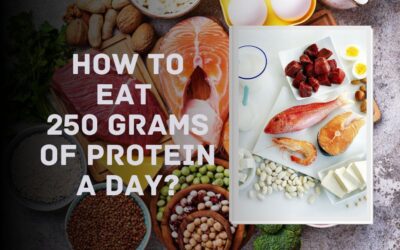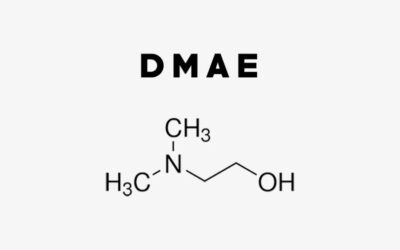Here’s a Quick Guide on What Is GH Gut & How to Prevent It
In bodybuilding, individuals relentlessly strive for a well-defined and muscular physique. Athletes employ diverse techniques to maximize their physical performance and attain their objectives. Palumbo, also called GH Gut, is a condition that poses challenges for certain bodybuilders. This article explores the aetiology, therapeutic interventions, and preventive measures for Palumboism, specifically emphasizing the correlation between Palumboism and the growth hormone (HGH) gut.

What Is GH Gut?
Palumboism, commonly known as “GH gut,” is a condition that affects certain bodybuilders, resulting in specific physical manifestations. Abdominal distension is a notable manifestation characterized by an atypical enlargement of the abdominal region, resulting in a protruding appearance resembling a distended gut. The condition is named after Dave Palumbo, a prominent bodybuilder from the 1990s, who was one of the first to be affected by this problem.
To answer the question of what is GH gut, we have to note the symptoms of the GH gut are characterized by abdominal enlargement, resulting in a distended and protruding belly. The condition manifests as a prominent and disproportionate midsection that is blocky. Individuals with Palumboism may exhibit a discrepancy in body proportions, characterized by a relatively lean and muscular appearance in the arms and legs, juxtaposed with a disproportionately enlarged midsection.
The aetiology of Palumboism still needs to be completed. However, it is hypothesized to be associated with the unregulated and excessive utilization of specific ergogenic substances, such as insulin, growth hormone, and synthetic anabolic steroids. These substances can induce organ hypertrophy, particularly in the intestines and liver, resulting in abdominal distension.
Causes of Palumboism
The aetiology of Palumboism remains incompletely understood. However, multiple factors are thought to contribute to its pathogenesis.
Human Growth Hormone (HGH) Abuse
Palumboism is primarily linked to misusing synthetic human growth hormone (HGH) and insulin-like growth factor 1 (IGF-1). Certain bodybuilders utilize hormones to enhance muscle growth and expedite recovery periods.
Excessive and prolonged use of HGH can result in various physiological changes in the body, which can contribute to the development of Palumboism. Palumbo is an uncommon and unexpected consequence of legitimate medical use of HGH, specifically for treating growth hormone deficiencies. Numerous individuals responsibly utilize HGH under medical supervision without encountering severe side effects.
The bodybuilding community discourages abusing HGH, insulin, and anabolic steroids due to their potential health risks and complications. Similarly, to answer the question What is GH gut, we have to understand its relationship to HGH.
Using these substances responsibly, supervised by qualified medical professionals, and at appropriate dosages is essential to prevent adverse effects and protect one’s health.
Insulin Abuse
Another factor contributing to this phenomenon is the misuse of insulin, which bodybuilders employ to augment the absorption of nutrients into their muscle cells. Insulin abuse can lead to insulin resistance, contributing to abdominal enlargement.
Insulin, a pancreatic hormone, regulates blood glucose levels by promoting cellular glucose uptake for energy metabolism. In the realm of bodybuilding and performance enhancement, certain individuals engage in the improper use of insulin due to its anabolic properties. Misusing insulin with HGH and anabolic steroids can have various negative consequences, including the risk of developing Palumboism.
It is crucial to consult qualified medical professionals when contemplating insulin or other performance-enhancing drugs. These professionals can evaluate your specific requirements and assist you in making well-informed choices regarding your health and fitness objectives. It is important to prioritize one’s well-being above all else.
Genetics
Certain individuals may have a predisposition to developing Palumboism. Genetic factors can modulate the body’s response to specific hormones and substances, thereby increasing the susceptibility of certain individuals to the condition. Genetics may influence an individual’s body composition, muscle development, and metabolism. Still, no conclusive evidence supports the notion that genetics alone can be attributed as the sole cause of Palumboism. Palumboism arises from the unrestricted and excessive utilization of specific performance-enhancing substances.
Individuals’ responses to drugs and hormonal changes can vary due to genetic factors. Genetic factors can influence an individual’s susceptibility to specific side effects and variations in response to performance-enhancing substances.
Steroid Use
Although steroids do not directly cause Palumboism, they are frequently used with HGH and insulin during bodybuilding cycles. Steroids can cause water retention and fat accumulation, potentially increasing abdominal size.
Anabolic steroids, synthetic derivatives of testosterone, are commonly utilized to stimulate muscle growth, augment strength, and improve athletic prowess. Anabolic steroids, when used responsibly and under medical supervision, can be legitimately employed in hormone replacement therapy for individuals with testosterone deficiencies.
Certain individuals may misuse and abuse anabolic steroids to achieve rapid and excessive muscle growth in bodybuilding and athletic performance enhancement. Misuse of these drugs may result in various side effects, including the onset of Palumboism.
Diet and Nutrition
Inadequate dietary habits and improper nutrition can contribute to the development of an enlarged abdomen associated with increased human growth hormone (HGH) levels. Overconsumption of calorie-dense, processed foods can result in weight gain and abdominal distension.
Although diet and nutrition can influence certain aspects of Palumboism, it is important to recognize that the main factor contributing to this condition is the improper and excessive use of performance-enhancing drugs. Bodybuilders and athletes must prioritize their overall health and well-being to mitigate the potential for Palumboism and other adverse side effects.
For instance, using performance-enhancing drugs responsibly under the supervision of qualified medical professionals. And maintaining a well-rounded and nourishing diet that aligns with their fitness objectives and overall well-being will significantly help to avoid such side effects.
Treatment Options for Palumboism
Managing Palumboism is a complex task due to the variability in treatment methods, which depend on the severity and underlying factors of the condition. It is essential to consult healthcare professionals and specialists before initiating any treatment. Individuals exhibiting Palumboism symptoms or those with abdominal distension concerns should consult a healthcare professional promptly.
It is recommended to consult a qualified healthcare professional, specifically one with expertise in endocrinology or sports medicine, for a comprehensive assessment and suitable treatment advice. Treatment aspects may include:
Discontinuation of Hormone Abuse
Ceasing the misuse of HGH, IGF-1, or insulin is essential in addressing the underlying cause of Palumboism. This step aids in gradually restoring the body’s hormonal balance and may reduce abdominal bloating.
Hormonal Therapy
Healthcare professionals may prescribe hormonal therapies to regulate hormone levels and alleviate symptoms associated with Palumboism. Seeking the guidance of a qualified medical professional is crucial when participating in this activity.
Diet and Nutrition
Maintaining a balanced and nutritious diet is crucial for effectively managing Palumboism. A nutritionist or dietitian can assist in creating an individualized meal plan to enhance overall health and reduce excessive weight gain.
Exercise and Physical Activity
Regular exercise positively affects weight management and well-being. Including core-strengthening exercises in one’s fitness routine can enhance abdominal aesthetics and diminish abdominal protrusion.
Prevention Strategies for Palumboism
Now that you have the answer to the question, What is GH gut? Preventing it entails adopting responsible practices in bodybuilding, performance enhancement, and overall health. Palumboism is frequently linked to the improper utilization and excessive use of performance-enhancing substances such as Human Growth Hormone (HGH), insulin, and anabolic steroids. Therefore, the primary preventive measures revolve around responsible usage of these substances and emphasizing maintaining good health and well-being. Below are several prevention strategies for Palumboism:
Responsible Use of Hormones
The responsible use of HGH, IGF-1, or insulin by bodybuilders necessitates the guidance of a knowledgeable healthcare professional. Refraining from excessive dosages and prolonged use is advisable, as these practices can heighten the likelihood of experiencing adverse effects.
Balanced Approach to Nutrition
Maintaining a well-balanced and nutritious diet is crucial. Consuming diverse whole foods, such as fruits, vegetables, lean proteins, and healthy fats, is recommended.
Regular Health Check-Ups
It is recommended to regularly consult qualified healthcare professionals for monitoring hormone levels and overall health. It will help enable early detection of abnormalities or potential issues.
Stay Informed
Keep yourself informed about the latest bodybuilding, nutrition, and health developments. Well-informed athletes can make educated decisions about their training and supplement usage.
Conclusion
Palumboism arises from hormonal imbalances governing the regulation of bodily fluid equilibrium. Anabolic steroids can disrupt the body’s fluid balance, increasing fluid retention. Excessive fluid accumulates in the abdominal region, resulting in the distinctive visual manifestation known as a “beer gut.” Palumboism can lead to fluid retention in various body parts, including the chest and arms, in severe instances.
Abdominal distention, commonly called bubble gut, is a perplexing phenomenon that elicits curiosity. For bodybuilders committed to competing, there exists a clear solution and potential remedy. Pairing HGH and insulin with a high-calorie or high-carbohydrate diet may lead to unintended consequences. Excessive fat accumulation in the abdominal area, commonly called a “bubble gut,” can further enhance the appearance of an already substantial and bloated physique.
Bodybuilders do not desire issues like Palumboism. Hence, modifying these routines to mitigate the risk of developing Palumboism is advisable. Body fat percentage is not a concern during competitions. Your overall health will also experience noticeable improvement. To mitigate the risk of Palumboism, it is imperative to practice responsible hormone usage, adhere to appropriate nutritional practices, and consistently monitor one’s health. Seeking guidance and support from healthcare professionals is crucial for obtaining personalized bodybuilding advice to maintain a healthy and well-balanced physique. We hope you are satisfied with our article, which aims to answer the question What is GH gut?









